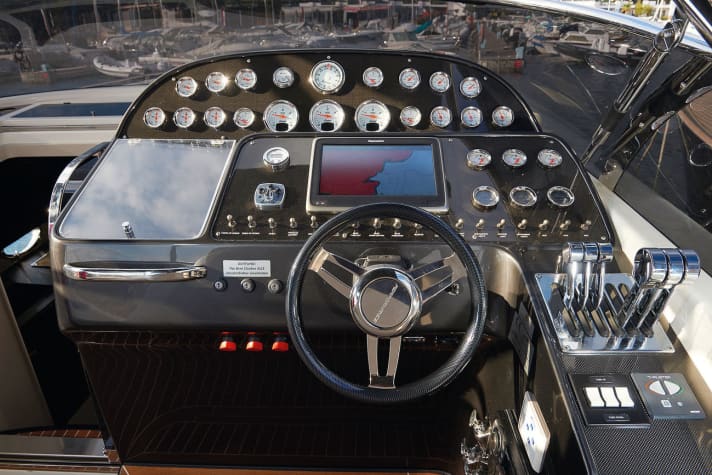
In order to be successful as a shipyard, it is important to know the wishes and ideas of the skippers at an early stage and to react accordingly. This not only applies toDesign and colour selectionbut also forEquipment and motorisation.
The optimum condition is reached when the boat is really fast but consumes as little as possible.
The shipyardPerformance likes to claim:"Life begins at 40 knots." In order to transport this statement into the present day, she hasEngine range adapted. Where once the price list was dominated by high-capacity petrol engines with plenty of power, it is now increasingly the diesel models that are dominating.











According to the shipyard, this is because itthere are significantly more skippers who demand a diesel engine. In addition, there used to be no manufacturer who could offer such engines with the ratio of mass to power that Performance wants for its boats.
But a lot has happened in this area; for exampleMarine Diesel from Sweden with the VGT500, a compact V8 diesel with 500 hp and aelectronically limited torque of 1000 Nm. The power is generated from a displacement of 6.6 litres. To make the gas exchange as efficient as possible, the engine has four valves per cylinder and common rail technology as well as aTurbocharger with variable geometry.
As a triple installation, this is theCurrently the most powerful diesel engine for the revised Performance 1501, an offshore boat 14.80 metres long, 3.70 metres wide and weighing over 9700 kg.
The crew can comprise up to twelve people; the model offers four plus two berths for overnight stays. With a total of 1500 hp and 3000 Nm, you can achieve aMaximum speed of 53 knots.
For comparison: Withthree petrol engines of type 662 SCI COMP (1896 hp), the top speed of an identical model is 57.3 knots..
Looking at theConsumptionit becomes clear that the 4.3 kn higher top speed comes with a considerable express bonus. Expressed in figures: when travelling with the self-igniters and the levers on the table, a total of 6.22 l/sm diesel through the injectors.
At thepetrol boat it is even an impressive 11.36 l/sm. Converted to one filling of the 1300 litre built-in tank, this means that with the 662-SCI-COMP machines, you have already filled the tank after114 nm no more petrol. With the engines from Marine Diesel, on the other hand, the fuel only runs out after209 nm is running out.
A similar picture emerges for the other speeds (10 kn, 30 kn, 35 kn and 40 kn). With a full tank of diesel with suitable engines and a speed of 10 kn, the maximum range is 247 nm. Converted, this results in a consumption of 5.26 l/sm. However, if you are travelling at the same speed on a petrol boat, you will burn 8.11 l/sm. The maximum distance travelled is then 160 nm.

At 30 kn theDiesel variant with a range of 228 nm and 5.71 l/smalso more economical than the petrol engine with 144 nm and 9.01 l/sm. The consumption values at 35 knots are 5.83 l/sm diesel and 9.95 l/sm petrol, from which we calculate a range of 223 nm (diesel) to 131 nm (petrol).
AsBest and most economical speedthe 40-kn mark with the VGT500 engines. One tank of fuel is then sufficient for 222 nm (consumption: 5.86 l/sm). The petrol engines require almost twice as much fuel at this speed: 11.26 l/sm run from the tank to the engines, meaning that the fuel runs out after just 115 nm.
Conclusion:
With the new engines from the Swedish manufacturer Marine Diesel, the Performance shipyard shows that it takes the needs of skippers seriously and moves with the times - and not just in terms of design.
